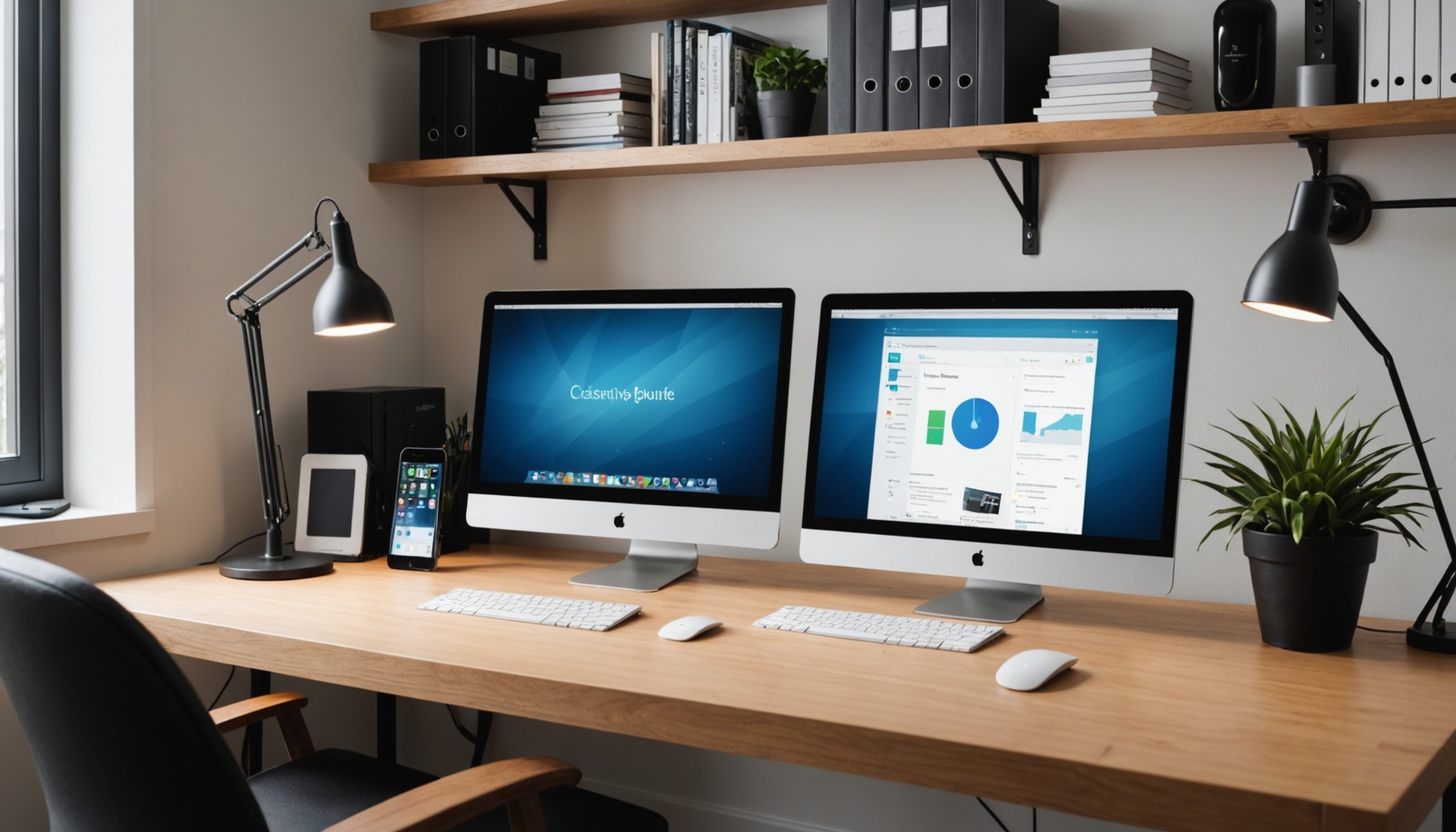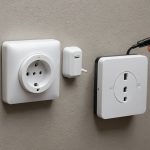Optimizing Your Smart Home Office Setup
Creating a smart home office setup requires careful planning and the right choices in equipment optimization. A well-organized workspace is key to maximizing productivity. It helps reduce stress and allows you to focus better on tasks. Begin by assessing what you really need to accomplish your tasks effectively.
Consider which smart devices will enhance your work efficiency. Think about smart lighting that adapts to different tasks, boosting energy levels during meetings or providing a relaxed environment for brainstorming. Smart thermostats keep the office comfortable, enhancing your ability to concentrate.
Also read : Ultimate diy guide: seamlessly link your smart plug to your smartphone in just a few easy steps!
Productivity tips can play a crucial role in device selection. Evaluate your work habits and how devices like smart assistants or voice-controlled gadgets may fit into your workflow. These can automate routine tasks, giving you more time to devote to critical work.
Integrating these devices for seamless operation ensures that your smart home office functions like a well-oiled machine, enhancing your workflow. Remember, the key is not just in acquiring smart devices but integrating them in a way that enhances efficiency and comfort. This approach will transform your home office space into a productivity hub that works around your needs.
In the same genre : Elevate your home security: a smartphone guide to optimizing smart lighting solutions
Using Smartphone Apps for Equipment Management
In an increasingly digitised workplace, smartphone management can significantly enhance the functionality of a smart home office. Through integrating productivity apps into daily routines, users can seamlessly control and manage devices, boosting productivity and convenience.
Recommended Apps for Smart Home Offices
Productivity apps like IFTTT, SmartThings, and Home Assistant enable users to control various smart devices from a single portal. These apps stand out due to their intuitive interfaces and extensive compatibility with diverse gadgets, allowing for efficient device organisation and operation. Such capabilities afford users the flexibility to customise settings, ensuring an optimised work environment.
Setting Up Device Control on Your Smartphone
Integrating devices via smartphone management is straightforward. First, download a compatible app for your smart devices. Next, follow in-app guides for connecting devices. This typically involves ensuring the devices and smartphone are on the same network, then selecting the desired devices to link. Step-by-step setup guides streamline this process, facilitating effective device control.
Automating Routine Tasks with Mobile Applications
With the right apps, smartphone management can simplify recurring tasks. Through automation, users can set up routines such as automatic light dimming or temperature adjustment based on the time of day. By leveraging the automation features of productivity apps, users experience enhanced efficiency and streamlined device interaction.
Strategies for Automation in Your Home Office
Incorporating office automation can significantly enhance workflow efficiency. Smart device integration particularly stands out for its ability to manage repetitive tasks, freeing up time for more critical projects. Consider automating aspects such as lighting, climate control, and even coffee brewing through smart tech. This not only cuts down manual effort but optimizes the environment for productivity.
A seamless workflow with smart technology is attainable by strategically choosing the right devices. For example, using voice-controlled assistants to schedule meetings or set reminders can streamline operations. Additionally, smart plugs can automate power usage of various devices, ensuring that gadgets like heaters or lamps are activated only when necessary.
Workflow efficiency also benefits from cloud-based tools that automate data entry and storage. Alongside smart tech, these can dramatically reduce errors and improve data retrieval processes.
Ultimately, the integration of these technologies contributes toward a more organized, efficient, and sustainable home office environment. Such advancements in office automation promise to not only enhance productivity but also create a space that supports your professional and personal well-being.
Troubleshooting Common Issues with Smart Devices
It’s crucial to regularly maintain your smart devices. These gadgets often face issues that can initially seem complex. Understanding the common problems can simplify the troubleshooting process.
Identifying Common Problems
Device troubleshooting starts with recognising frequent issues. These can include connectivity interruptions, unresponsive devices, or erratic performance. Often, such problems stem from simple causes like software updates or network changes. Users may also experience challenges with device integration within their smart home solutions.
Troubleshooting Techniques
Basic device troubleshooting involves checking connections first. Ensure that your device is properly connected to Wi-Fi and that the router is functioning. Another handy maintenance tip is rebooting the device, which can resolve many glitches. Updating device software can also fix bugs. For more complicated smart home solutions, consider resetting devices to their factory settings.
When to Seek Professional Help
Not all issues can be solved through basic maintenance tips. If a device consistently malfunctions despite trying standard solutions, it might be time to seek professional help. Look for signs like persistent failure to operate, damage, or error messages. Professional assistance ensures the longevity of your smart home solutions and preserves your device troubleshooting efforts.
Best Practices for Managing Your Smart Home Office
Creating and maintaining a smart office environment requires attention to detail and regular management. A primary step in ensuring a productive space is to keep your workspace clutter-free. Efficiency tips, such as organizing cables, utilizing storage solutions, and maintaining clean desk surfaces, significantly enhance focus and productivity.
To optimize your smart office management, it’s crucial to regularly update device software and firmware. These updates not only keep your systems secure but also improve functionality and compatibility with other devices. Staying current with updates ensures you are taking full advantage of technological advancements.
Sharing tips with colleagues can lead to a more productive environment for everyone involved. Whether working remotely or in a shared office space, exchanging ideas on workspace organization and efficiency tips fosters collaborative growth.
Suppliers, guides, and even social media platforms offer a plethora of strategies to streamline your smart office management. By integrating these approaches, you create a workspace conducive to higher productivity and innovation. Engage actively with peers, keep your devices updated, and maintain an organized workspace to excel in managing your smart home office.
Real-Life Examples of Smart Home Office Transformations
Transforming a traditional office into a smart office can revolutionise productivity and efficiency. These smart office examples showcase successful setups and productivity case studies that demonstrate the tangible benefits of smart technology.
Case Study: A Tech Startup’s Smart Office Transformation
Imagine a tech startup struggling with communication and disorganisation. By adopting smart solutions, they transformed their workspace. Implementing smart lighting and climate control improved employee comfort and productivity. Smart scheduling systems helped streamline meetings, enhancing collaboration. This transformation is a prime example of how technology can boost efficiency and morale in a smart office environment.
Home Office Makeover: From Chaos to Clarity
Consider the journey of an individual working from home amidst chaos. By integrating smart gadgets like voice-controlled devices and automated task reminders, their workspace became a haven of clarity. The switch to a smart home office setup not only improved organisation but also heightened focus, allowing for unparalleled productivity in daily tasks.
Testimonial: Increased Productivity with Smart Solutions
Individuals have shared their experiences, highlighting how smart office setups significantly increase productivity. Transitioning to smart technology led to streamlined routines. With time-saving gadgets, distractions were minimised, allowing the focus to be directed towards achieving goals. These testimonials offer key takeaways on using smart technology in everyday tasks.











